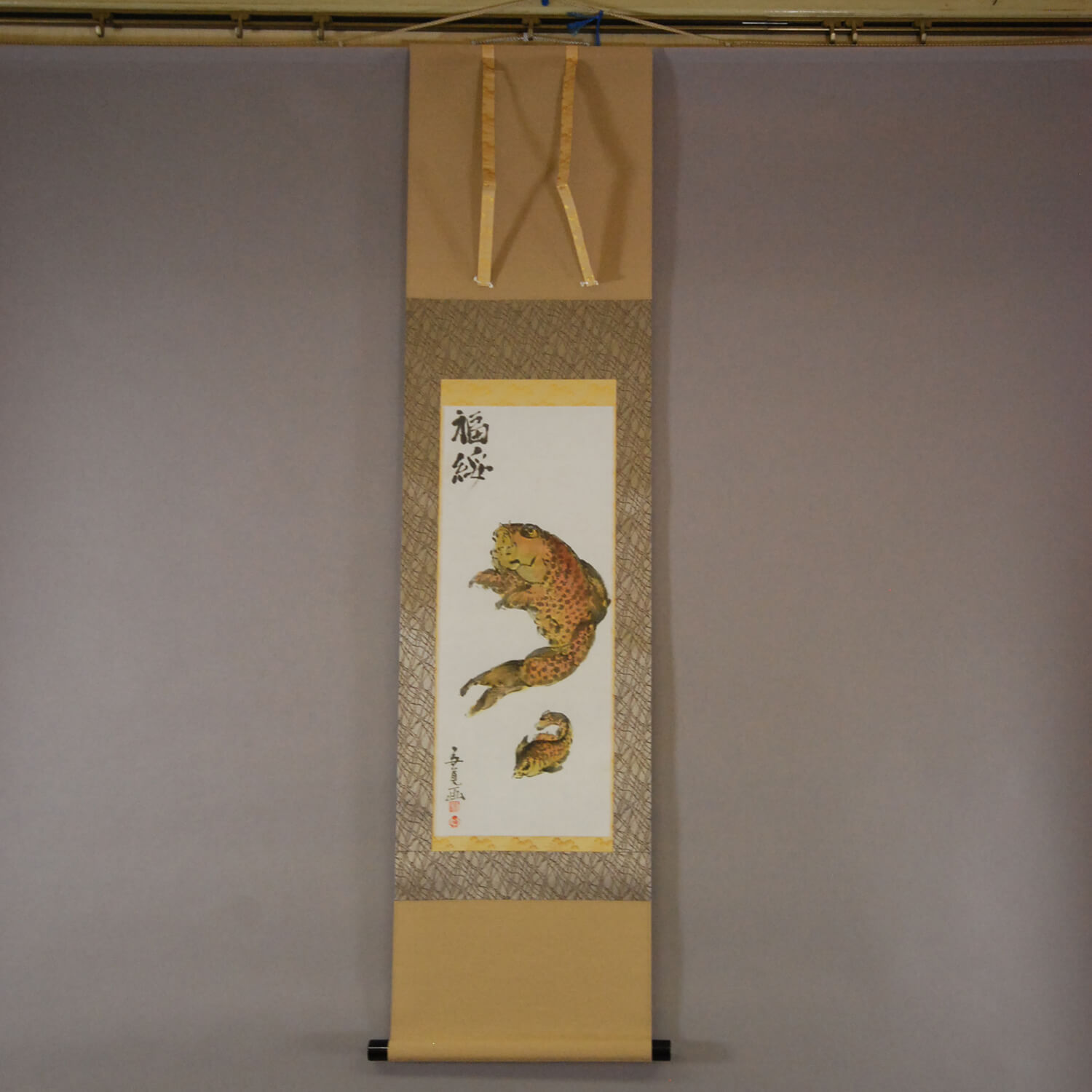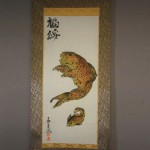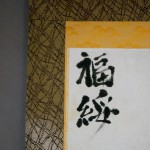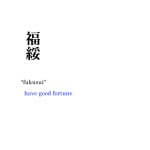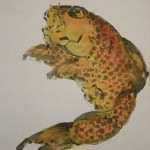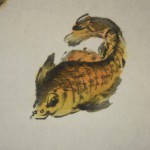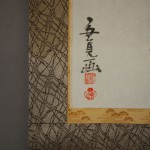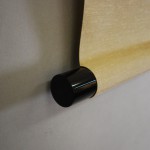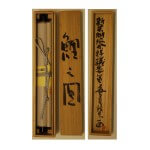Products Lineup
News / Blog
Other Menus
Kakejiku Hanging Scroll: Koi Fish (Carp) / Yasuo Tadami - Koi-no-zu
- Product ID
- 0148
- Name
- Yasuo Tadami
- Profile
1939 – ?
A Japanese-style painter- Size
- 420mm x 1460mm
- Roller End Material
Wood coated with black "urushi" (lacquer)- Material of the Work
- Japanese paper
- Price
- JPY 80,000
- Stock Condition
- In stock
- Payment: Click the Paypal Mark
- Duty and Taxes
Import duty and taxes are beyond our control and may apply to your shipment. Please noted that these fees are the responsibility of the buyer.
- Description
Yasuo Tadami, a Japanese-style and Western-style painter, was well known for his unique painting style and subjects. He created a number of works in a broad range of genres such as landscapes, “kachō-ga” (paintings of flowers and birds) and portraits.
This is a painting of two carp by Yasuo Tadami. The reddish brown color of the carp is typical of him. The carp’s facial expression is very lively, so we can almost feel the carp’s strong vitality. The contrast between the large and small carp provides depth to the work, and gives a strong sense that the carp are swimming lively.

